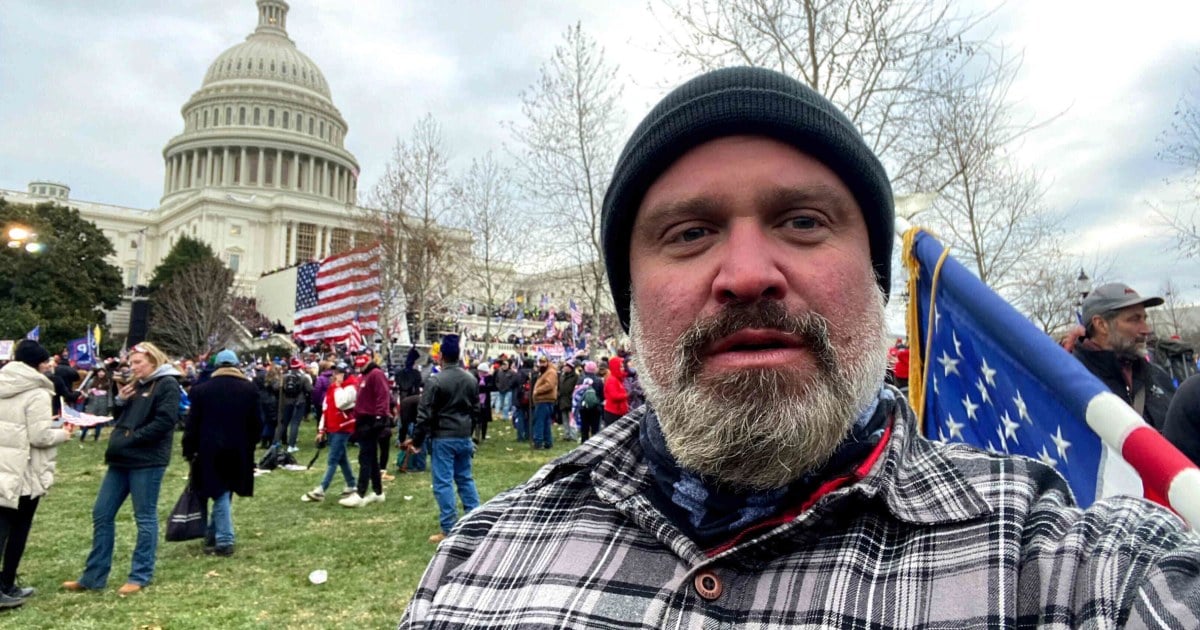- cross-posted to:
- news@lemmy.world
- cross-posted to:
- news@lemmy.world
Joe Biggs, a Proud Boys leader convicted of seditious conspiracy who the government says “served as an instigator and leader” during the Jan. 6 attack on the U.S. Capitol, was sentenced to 17 years in federal prison on Thursday.
It is among the longest sentences in Capitol riot cases. The record is the 18-year sentence given to Oath Keepers founder Stewart Rhodes, also convicted of seditious conspiracy, after prosecutors sought 25 years in federal prison in his case.



deleted by creator
So is conspiring to overthrow the govt, so……
deleted by creator
He didn’t threaten to do it, he did it
Conspiracy, by definition, is talking about commiting a crime, and then doing an action to actually commit the crime.
So let’s say I get some friends together and we talk about pulling a heist on the local art museum. That in and of itself is not a crime, we are just talking. But if we start going out and casing the joint, buying crow bars and shit to actually do it, it becomes a conspiracy to commit burglary, which is a crime. Even though we didn’t actually break into the place yet, it becomes a crime when we make actions toward the crime.
Dude made statements about overthrowing the government. Not a crime. But then he went to the government and started jumping fences, and breaking into buildings. Crime.
Also, by your logic yelling fire wouldn’t be illegal, it’s literally speech. Also threatening is a crime. If I say, I’m gonna hit you with this hammer, and I have a hammer in my hand, that is assault, which is totally a crime. Didn’t actually hit you, just threatened to but with the clear ability to go through with that threat.
deleted by creator
Yes, it is.
Edited for formatting and to remove needless snark.
Good Lord you are dense. People have already clearly explained why it is in fact a crime, complete with ELI5 examples.
If you don’t get it, that’s on you. The dude is going to prison where he belongs.
You seem like somebody who is destined to end up just like this guy with wild ideas like “threatening without an action isn’t a crime”, so keep at it.
deleted by creator
That’s not true at all. It is illegal in many places to make threats or intimidate people. See here: https://www.criminaldefenselawyer.com/crime-penalties/federal/Criminal-Threats.htm
It actually isn’t.
It’s not as cut and dry as that-
“The falsely shouted warning, while technically speech, could potentially violate a state’s criminal laws against disturbing the peace or disorderly conduct, whether or not it provokes a stampede, for instance."
-Nashwa Gewaily, a media and First Amendment lawyer
deleted by creator
Speech alone isn’t, this guy did more than speak.
deleted by creator
so is a conspiracy, incitement, etc… we are talking about the freedom of speech vs freedom of concequence from that speech. that is what I take issue with. inciting panic in closed confines has immediate consequences - this is clear and therefore typically prohibited.
political speech fomenting real-world violence (or panic) should result in the same level of legal consequence when action is taken based on that speech. imho, you can not separate the speech from the act once the act has taken place.
deleted by creator
your point is well taken - speech must be protected.
but my illustration is indended to be as outlandish as I believe the lawyer’s statement was. once there is an overt act, the speech is no longer separate and protected. his statement appears to try and separate the two. separating speech from the resulting act (and therefore consequences) seems to be the current playbook and it infuriates me.
I hope we are not talking past each others here as I believe I understand your point, but my comment was to illustrate the silliness of the statement by Biggs’s lawyer.
edit: context